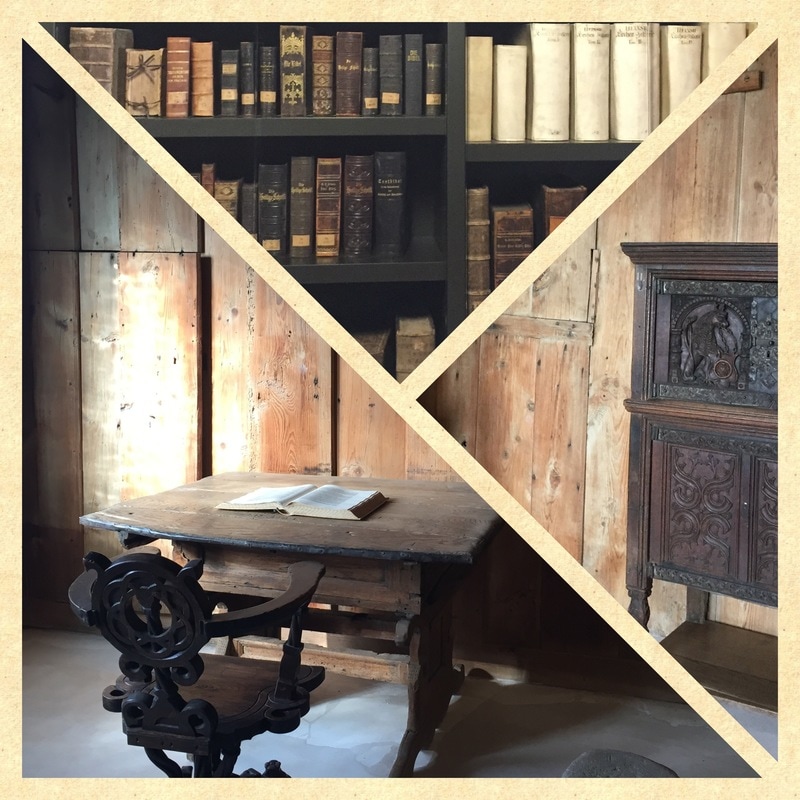Jena2017年三月,我到德國找我一位很要好的朋友。她是一位德國女生,當初是在劍橋認識的。她在唸碩士,我則是在唸博一。我們那時是室友,她的房間在我房間的對面。 她畢業後兩三年,有一次我回台灣,順便去中國旅行,約她跟我一起去中國旅行,帶著她一起去四川西藏邊境、湖南張家界、以及上海。那是她第一次到亞洲旅行,樣樣都透著新鮮。 後來我們一直在保持聯絡,想想很久沒見面了,德國又沒有很遠,飛去找她好了。這一趟旅行,除了見到好久不見的朋友之外,她還特地開車,我們一起去參觀一個很著名的城堡,回來的路上也順便看了一下UNESCO出名的 Weimar。 首先先討論一下Jena。朋友現在在Jena唸博士,剛開始說要去找她,也沒有查Jena是什麼樣的地方。原先以為應該是小鎮,沒什麼看頭,會去是為了想見朋友,不是為了旅行。 後來她寄了一封email 給我,問我要看 Leipzig還是要去Wartburg Castle。她說 Wartburg Castle是當初 Martin Luther藏身,翻譯聖經的地方。 我一聽之下,不得了!這麼有來頭的城堡!我博士唸的是英國的宗教改革,而英國的宗教改革,是基於德國的宗教改革。說來說去,Martin Luther可是大宗師。他翻譯德文聖經,大大影響歐洲十六世紀之後的歷史。這麼重要的城堡,當然要去的! 我看了一下網路上對這個城堡的簡界,愈看愈有興趣,原來2017年是德國宗教改革的500週年紀念呢!德國到處都有紀念活動,無論是展覽、研討會,熱鬧極了。 Jena本身也非常有Martin Luther的淵源。這個小城鎮之前是德國的宗教改革的印刷業的重鎮,所以德國宗教改相關的書籍,很多都是Jena這邊印的。 當年Martin Luther還在這裡的 St Michael's Church傳過道。 比較可惜的是,當初的 printing press ,最近才剛修復,但是要今年四月或五月才正式開放,所以去的時候,沒看到非常著名的 printing press,有一點點可惜。這可是當初出版 Luther的神學書籍的最重要的printing press呢。 以下為wikipedia對Jena的介紹: Jena (German pronunciation: [ˈjeːna] ( listen)) is a German university city and the second largest city in Thuringia ... the city itself has a population of nearly 110,000. Jena is a centre of education and research. Jena was first mentioned in 1182 and stayed a small town until the 19th century, when industry developed. For most of the 20th century, Jena was a world centre of the optical industry around companies like Carl Zeiss, Schott and Jenoptik (since 1990). Between 1790 and 1850, Jena was a focal point of the German Vormärz as well as of the student liberal and unification movement and German Romanticism. Notable persons of this period in Jena were Friedrich Schiller, Johann Gottlieb Fichte, Georg Wilhelm Friedrich Hegel, Novalis and August Wilhelm Schlegel. 我個人對德國宗教改革最有興趣,所以抓這部份的wiki說明: The Protestant Reformation was brought to the city in 1523. Martin Luther visited the town to reorganize the clerical relations and Jena became an early centre of his doctrine ... An important step in Jena's history was the foundation of the university in 1558. Ernestine Elector John Frederick the Magnanimous founded it, because he had lost his old university in Wittenberg to the Albertines after the Schmalkaldic War. [In the 17th century, there was a boom] in printing business caused by the rising importance of books (and the population's ability to read) in the Lutheran doctrine, and Jena was the second-largest printing location in Germany after Leipzig. 我們之前在當室友的時候,我以辦 Chinese dinner party聞名,所以朋友馬上提議,我們總共有兩個晚餐,不如她做一個德國菜,我做一個中式料理。 朋友說早餐一定要吃德式早餐,意思就是剛烤出來的麵包,加上果醬、水煮蛋、咖啡、奶油、起司。 我們到附近的麵包店買麵包,朋友問我想吃什麼,在英國住久了,英國麵包超難吃,所以我無敵興奮,覺得什麼都看起來好好吃的樣子。剛出爐的麵包,好香,我們買了一大包。 德式料理要吃什麼,朋友煩惱了好久,我們在超級市場走來走去。我的中式料理要吃什麼,馬上就決定好,也買好了,倒是朋友搞了好久。 薯條是比利時式薯條,比想像中粗,不過炸得很香甜,配上美乃茲,我覺得蠻怪異的,不過比利時人都這樣吃。英國的薯條通常都濕濕的,非常的恐怖,能夠吃到外脆內軟的薯條,覺得好幸福。 以下中間照片顯示的是某一種醃製過的 bell pepper,朋友說這是在德國超級市場蠻常見的前菜。咬下去的時候,大吃一驚,因為這是辣的,而且還很甜,也很酸。非常多口味雜在一起。我以為這會是義式口味,完全不是,才會表情猙獰。 右手邊的則是德式料理的主菜。朋友做了一個 German pasta。Pasta通常會以為一定是義大利料理,其實不然,很多國家都有pasta,只要是長得像義大利麵類的都可以稱之為pasta。這個pasta是比較像我們中式料理中的水餃的概念,中間包的是牛肉,旁邊附上奶油洋蔥。 朋友比較特別的吃法是從瑞士人學來的:加蘋果醬。蠻甜的,也很特別。我個人會把這個當牛肉水餃吃啦,大概會加醬油,或是加辣椒油~~~ 至於我的中式料理做什麼呢?我是做糖醋魚,薑絲炒高麗菜,以及番茄炒蛋。超級市場找不到蔥,只好用最接近的西式料理中會出現的chives代替,口味不太對,不過這是最接近的了。 高麗菜有一點燒焦,不是很熟悉朋友家中的電磁爐,怎麼可以那麼高溫的,馬上就焦掉了。 但至少糖醋魚還不錯吃,魚新鮮,我也有找到亞洲進口的糖醋醬,而不是那種外國人在用的鬼糖醋醬。 Wartburg Castle這個城堡離Jena開車要一個多小時,一百多公里遠。城堡非常的氣派。 更驚人的是,這個城堡在中世紀的時候非常的有名,以吟唱詩人、藝文活動聞名,所以城堡內的裝橫非常有看頭。 對城堡歷史有興趣的,可以看一下: Wartburg Castle tourism website. 這個城堡,除了在德國宗教改革歷史中非常有重要性之外,也是德國十九世紀的國族運動中很重要的地點。 以下是從官網上截取下來的介紹: According to legend, the castle's origins date back to 1067. The surviving main castle building, the 12th century palas (great hall), a gem of late Romanesque architecture, still bears traces of its former glory. As the main seat of the landgraves, the castle was a pre-eminent centre of artistic endeavour where all of the fine arts were celebrated. It once echoed to the songs of Walther von der Vogelweide and inspired a number of epic poems by Wolfram von Eschenbach. This was the setting of the fabled Battle of the Bards, a tale immortalised in Richard Wagner's opera Tannhäuser. Wartburg Castle was also the home of Saint Elisabeth, still revered to this day, and it provided a refuge for the exiled Martin Luther, who translated the New Testament into German here. The Wartburg Festival of 1817, organised by the student fraternities, celebrated the achievements of Luther, the Reformation and the Battle of Leipzig. It was the first popular declaration of sentiment for a unified and independent nation state. 以下這張照片,是號稱 Martin Luther 當初居住的房間。不過當然書桌等等都是示意圖,只有房子本身是十六世紀留下來的,房子中的物品幾乎都是後來加進去的。 Wartburg Castle 最後一站是他們的餐廳,我們各點了一個蛋糕,這像奶油又非奶油的那一層叫 quark,朋友幫我查出來的,因為我覺得超級好吃,非常想知道這是什麼。 深藍色小白點的容器則是這個區域很著名的樣式,全套搭配起來蠻漂亮的。 WeimarWeimar是順道參觀一下。來這裡通常不是為了特定看什麼,而是感受一下童話故事小鎮的感覺。每一棟房子都是這種 pastel colour,怎麼拍怎麼漂亮。
這個小鎮非常的寧靜,感覺好像穿梭時光,來到一個古老的城鎮,或是走進電玩中才會出現的完美小鎮。 這些房子看起來像是假的,像是有錢人家的小女生在玩的玩具小鎮。
0 Comments
Your comment will be posted after it is approved.
Leave a Reply. |
Dr Fiona Hu台大外文系學士 YouTube
How to Write a CV
GRE Stories: Learning vocab through stories
眾文出版專書
文章分類
All
Archives
March 2024
|


























